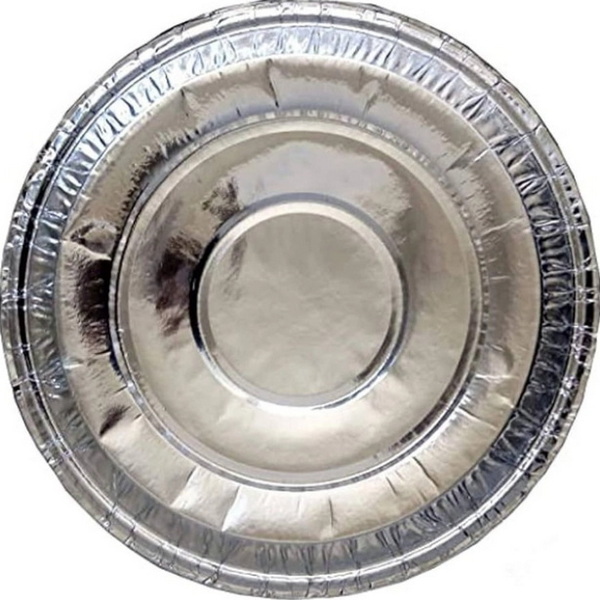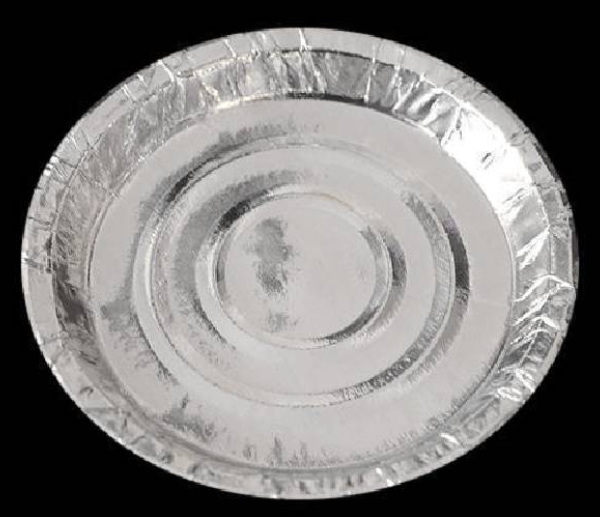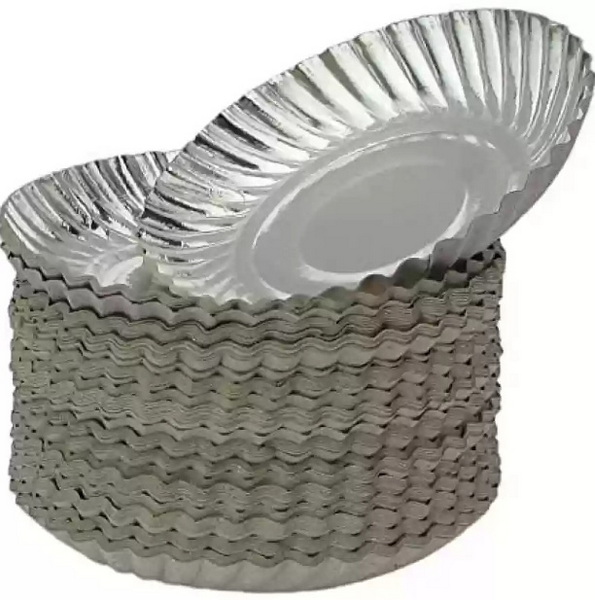
Content Menu
● Introduction to Silver Disposable Plates
>> Environmental Impact of Silver Disposable Plates
● Eco-Friendly Alternatives
● Design Trends and Sustainability
>> Ethical Sourcing and Carbon Footprint Reduction
● Market Trends and Consumer Preferences
● Future of Disposable Tableware
● Impact on Local Economies
● Educational Initiatives and Awareness
● Conclusion
● FAQs
>> 1. Are Silver Disposable Plates Recyclable?
>> 2. What Are the Eco-Friendly Alternatives to Silver Disposable Plates?
>> 3. How Do Silver Disposable Plates Impact the Environment?
>> 4. Can Silver Disposable Plates Be Used Multiple Times?
>> 5. Are There Stylish Eco-Friendly Options Available?
In recent years, the demand for eco-friendly and biodegradable disposable tableware has increased significantly. This shift is driven by consumers' growing awareness of environmental issues and their desire to reduce their ecological footprint. Among the various options available, silver disposable plates have gained popularity due to their elegant appearance and perceived eco-friendliness. However, it's essential to examine whether these plates truly align with eco-friendly and biodegradable standards.

Introduction to Silver Disposable Plates
Silver disposable plates are often made from plastic materials designed to mimic the appearance of stainless steel or silverware. They are commonly used at events such as weddings, parties, and corporate gatherings where a sophisticated yet disposable option is preferred. These plates are praised for their durability and aesthetic appeal, but their environmental impact is a topic of concern.
Environmental Impact of Silver Disposable Plates
The environmental impact of silver disposable plates primarily stems from their material composition and disposal methods. Most silver disposable plates are made from plastic, which is not biodegradable and contributes to plastic waste. While some plastics are recyclable, the process can be complex and varies by region. The production of these plates also requires significant energy and resources, further increasing their environmental footprint.
Eco-Friendly Alternatives
For those seeking eco-friendly alternatives to silver disposable plates, several options are available:
1. Biodegradable Plates: Made from materials like sugarcane pulp or bamboo, these plates are compostable and reduce waste significantly. Sugarcane bagasse plates, for example, are derived from sugarcane fiber waste and are microwave-safe, making them a versatile option for both hot and cold foods.
2. Palm Leaf Plates: Crafted from fallen palm leaves, these plates are 100% biodegradable and compostable. They offer a unique, rustic aesthetic and can withstand high temperatures without leaching chemicals.
3. Bamboo Plates: Bamboo plates have emerged as a popular choice due to their biodegradability and renewable nature. They are durable, microwave-safe, and dishwasher-safe, making them suitable for various dining occasions.
4. Wheat Straw Plates: Utilizing agricultural by-products, wheat straw plates provide a lasting and biodegradable choice. They are microwave and freezer-safe, decomposing within 30-45 days in a composting environment.
5. PLA (Polylactic Acid) Utensils: While not plates, PLA utensils are a popular choice for compostable cutlery. They are derived from fermented plant starch and mimic the properties of traditional plastics while being fully biodegradable.
Design Trends and Sustainability
In 2025, the trend in disposable tableware is shifting towards sustainability and innovative design. Consumers are looking for products that not only reduce environmental impact but also offer stylish and functional solutions. The market now provides a wide range of eco-conscious alternatives that cater to diverse needs and possibilities. For instance, customization in disposable tableware has become increasingly popular, allowing consumers to personalize their plates for events like weddings and corporate gatherings.
Ethical Sourcing and Carbon Footprint Reduction
Companies are focusing on ethical sourcing and reducing carbon footprints by using renewable materials and optimizing manufacturing processes. This approach ensures that products like silver disposable plates are produced with minimal environmental harm. Ethical sourcing practices involve using materials that are sustainably sourced and have a lower environmental impact throughout their lifecycle.

Market Trends and Consumer Preferences
The shift towards eco-friendly disposable tableware is gaining momentum as consumers become increasingly aware of environmental issues. A significant trend is the growing preference for biodegradable materials over traditional plastic. Many consumers are now opting for plates made from bamboo, sugarcane, or palm leaves, which decompose naturally and leave minimal environmental impact. This shift is not just a passing fad; recent surveys indicate that approximately 70% of consumers are willing to pay a premium for sustainable products, highlighting a clear market demand for greener alternatives.
Health consciousness is also influencing consumer choices. The pandemic has heightened awareness about hygiene, prompting many to prefer single-use items for safety reasons. However, consumers are now more discerning, looking for options that do not compromise on sustainability. This has resulted in a surge in demand for products that are both hygienic and environmentally friendly, driving innovation in the industry.
The convenience factor cannot be overlooked. Busy lifestyles and the rise of takeout and delivery services have made disposable tableware a necessity. Consumers favor products that are not only functional but also aesthetically pleasing. The trend towards minimalism has led to a preference for sleek, elegant designs that can elevate any dining experience without the hassle of traditional dishwashing.
Moreover, social media plays a pivotal role in shaping consumer preferences. Platforms like Instagram and Pinterest have become vital in showcasing eco-friendly tableware, influencing purchasing decisions through visually appealing content. Influencers and brands that emphasize sustainability often capture the attention of eco-conscious consumers, further accelerating the demand for green products.
Lastly, regulatory changes are shaping the market landscape. Many regions are implementing bans on single-use plastics, compelling manufacturers to innovate and adapt. This regulatory push is fostering a more competitive environment, where companies are racing to develop sustainable alternatives that meet consumer expectations while complying with new laws.
Future of Disposable Tableware
The future of disposable tableware is being molded by a blend of environmental awareness, customization, health consciousness, convenience, social media influence, and regulatory changes. As these trends continue to evolve, they will undoubtedly redefine the market, paving the way for innovative solutions that align with consumer values and preferences.
Technological advancements are playing a pivotal role in shaping the future of disposable plates. Improved manufacturing techniques, enhanced durability, and water- and grease-resistant coatings are being incorporated to make eco-friendly options more functional. Additionally, customization and branding on disposable plates for restaurants, cafes, and corporate events are growing trends, enhancing brand visibility.
Furthermore, the rising trend of sustainable packaging aligns with consumer preferences, pushing companies to innovate and launch premium, high-quality eco-friendly disposable plates. As retail chains and e-commerce platforms expand their product offerings, accessibility to a diverse range of disposable plates is set to increase. Overall, the industry is poised for steady growth, with sustainability and innovation being the key driving factors shaping its future.
Impact on Local Economies
The shift towards eco-friendly disposable tableware also has significant implications for local economies. Small businesses and local manufacturers are benefiting from the increased demand for sustainable products. This trend supports local employment and stimulates economic growth by promoting the use of locally sourced materials and manufacturing processes.
Moreover, the emphasis on sustainable practices is fostering a culture of environmental stewardship within communities. Local initiatives and community programs focused on reducing waste and promoting recycling are gaining traction. These efforts not only contribute to a cleaner environment but also educate consumers about the importance of sustainable living.
Educational Initiatives and Awareness
Educational initiatives play a crucial role in promoting the use of eco-friendly disposable tableware. Schools and universities are incorporating environmental education into their curricula, teaching students about the benefits of sustainable living and the impact of disposable plastics. This awareness from a young age helps shape consumer preferences and encourages future generations to adopt environmentally friendly practices.
Additionally, public awareness campaigns are being launched to inform consumers about the availability and benefits of biodegradable alternatives. These campaigns often highlight the environmental consequences of traditional plastics and provide practical tips on how to reduce waste in daily life.
Conclusion
While silver disposable plates offer a convenient and stylish solution for events, they are not inherently eco-friendly or biodegradable. For those seeking sustainable options, biodegradable or reusable alternatives are recommended. As consumers become more environmentally conscious, the demand for eco-friendly tableware is expected to grow, driving innovation in sustainable materials and manufacturing processes.

FAQs
1. Are Silver Disposable Plates Recyclable?
Most silver disposable plates are made from recyclable plastics, but the recyclability depends on local recycling facilities and programs.
2. What Are the Eco-Friendly Alternatives to Silver Disposable Plates?
Eco-friendly alternatives include biodegradable plates made from sugarcane pulp, bamboo, palm leaves, and wheat straw. These options are biodegradable and made from renewable resources.
3. How Do Silver Disposable Plates Impact the Environment?
Silver disposable plates contribute to plastic waste and require energy for production and transportation. They are not biodegradable and may end up in landfills if not recycled properly.
4. Can Silver Disposable Plates Be Used Multiple Times?
While some silver disposable plates are sturdy, they are generally designed for single use. However, some users report reusing them after washing.
5. Are There Stylish Eco-Friendly Options Available?
Yes, eco-friendly disposable plates come in stylish designs and patterns, making them suitable for upscale events while maintaining sustainability.

















